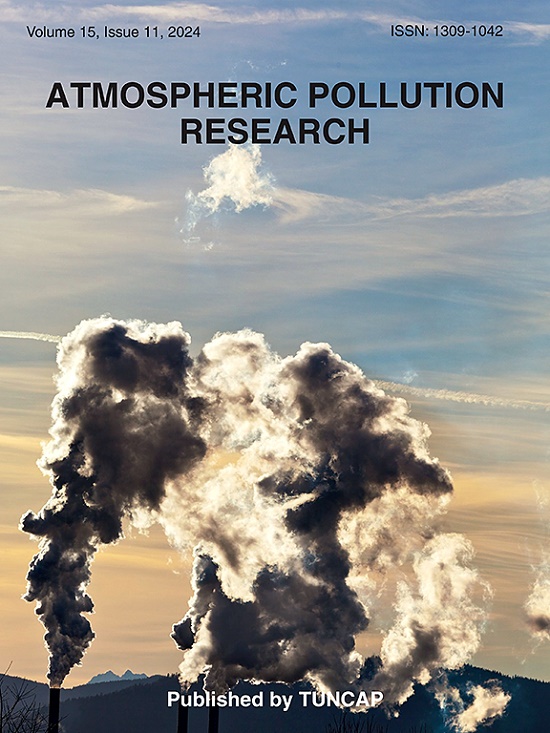Characterization of road dust and formulation of a molasses-based dust suppressant for heavy-duty haul roads in open-pit coal mine
IF 3.5
3区 环境科学与生态学
Q2 ENVIRONMENTAL SCIENCES
引用次数: 0
Abstract
To address the rapid evaporation of water during dust suppression on heavy-duty roads in open-pit coal mine, this study investigated the physicochemical properties of road dust and formulated a molasses-based dust suppressant with enhanced water retention, anti-evaporation, and consolidation capabilities. Analysis revealed that road dust contains high levels of TSP, PM10 and PM2.5, indicating significant dust pollution potential. The presence of hydrophilic components, confirmed by crystal structures and functional groups, was supported by the dust's small initial contact angle and short settling time. However, its low moisture content (1.24 %) highlighted poor water retention. To overcome this, molasses, an industrial by-product with excellent water retention and consolidation properties, was chosen as the primary component of the suppressant. Experiments demonstrated that a 30 % molasses solution combined with sodium dodecyl benzenesulfonate (SDBS) achieved optimal synergy. The addition of 2 % glycerol enhanced moisturizing performance, while 2 % CaCl2 provided maximum moisture absorption. The optimized suppressant achieved an evaporation rate of 2.71 g/h, a failure resistance force of 136.69 N, and a penetration depth of 8.27 cm. Microscopic analysis showed that the consolidated dust layer exhibited a smooth, dense layer with firmly bonded dust particles. In its liquid state, the molasses-based dust suppressant wets and suppresses dust; upon water evaporation, it solidifies into a cohesive layer, providing lasting dust suppression. This study offers an efficient and environmentally sustainable solution for dust suppression on open-pit coal mine haul roads.
露天矿重载道路粉尘特性及糖蜜基粉尘抑制剂的研制
针对露天矿重型路面粉尘抑制过程中水分快速蒸发的问题,研究了路面粉尘的物理化学性质,研制了一种具有增强保水性、抗蒸发和固结能力的糖蜜基粉尘抑制剂。分析显示,道路粉尘含有高浓度的TSP、PM10和PM2.5,表明严重的粉尘污染潜力。晶体结构和官能团证实了亲水成分的存在,这是由于尘埃的初始接触角小,沉降时间短。然而,它的低含水量(1.24%)突出了较差的保水性。为了克服这个问题,糖蜜是一种工业副产品,具有优异的保水和固结性能,被选为抑制剂的主要成分。实验表明,30%的糖蜜溶液与十二烷基苯磺酸钠(SDBS)的协同作用达到最佳。添加2%的甘油增强保湿性能,而2%的CaCl2提供最大的吸湿性。优化后的抑制剂蒸发速率为2.71 g/h,失效阻力为136.69 N,穿透深度为8.27 cm。显微分析表明,固结粉尘层光滑致密,粉尘颗粒粘结牢固。在液体状态下,糖蜜基抑尘剂湿润并抑制粉尘;水蒸发后,它凝固成一个有凝聚力的层,提供持久的粉尘抑制。本研究为露天煤矿运输道路降尘提供了一种高效、环保、可持续的解决方案。
本文章由计算机程序翻译,如有差异,请以英文原文为准。
求助全文
约1分钟内获得全文
求助全文
来源期刊

Atmospheric Pollution Research
ENVIRONMENTAL SCIENCES-
CiteScore
8.30
自引率
6.70%
发文量
256
审稿时长
36 days
期刊介绍:
Atmospheric Pollution Research (APR) is an international journal designed for the publication of articles on air pollution. Papers should present novel experimental results, theory and modeling of air pollution on local, regional, or global scales. Areas covered are research on inorganic, organic, and persistent organic air pollutants, air quality monitoring, air quality management, atmospheric dispersion and transport, air-surface (soil, water, and vegetation) exchange of pollutants, dry and wet deposition, indoor air quality, exposure assessment, health effects, satellite measurements, natural emissions, atmospheric chemistry, greenhouse gases, and effects on climate change.
 求助内容:
求助内容: 应助结果提醒方式:
应助结果提醒方式:


